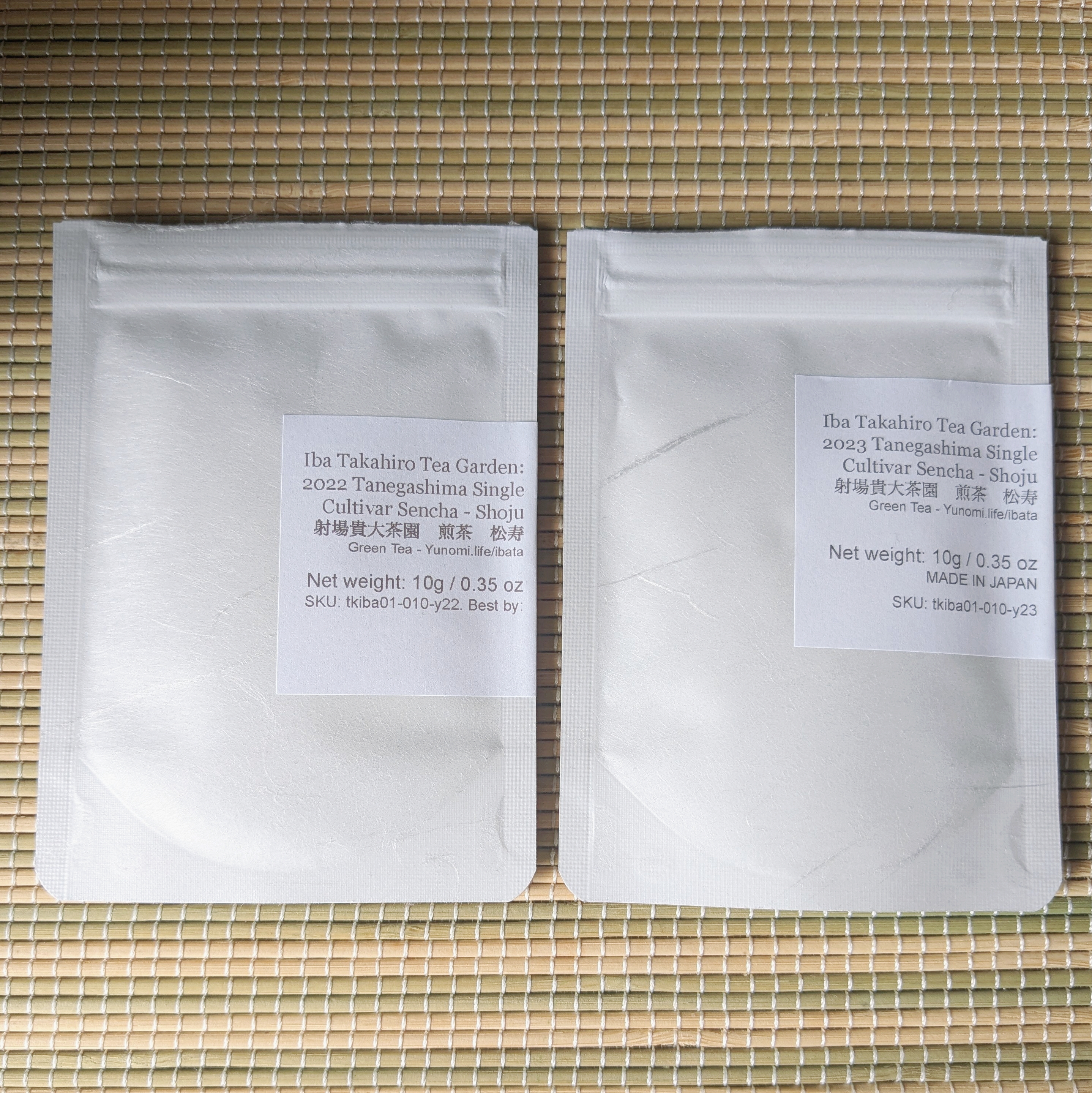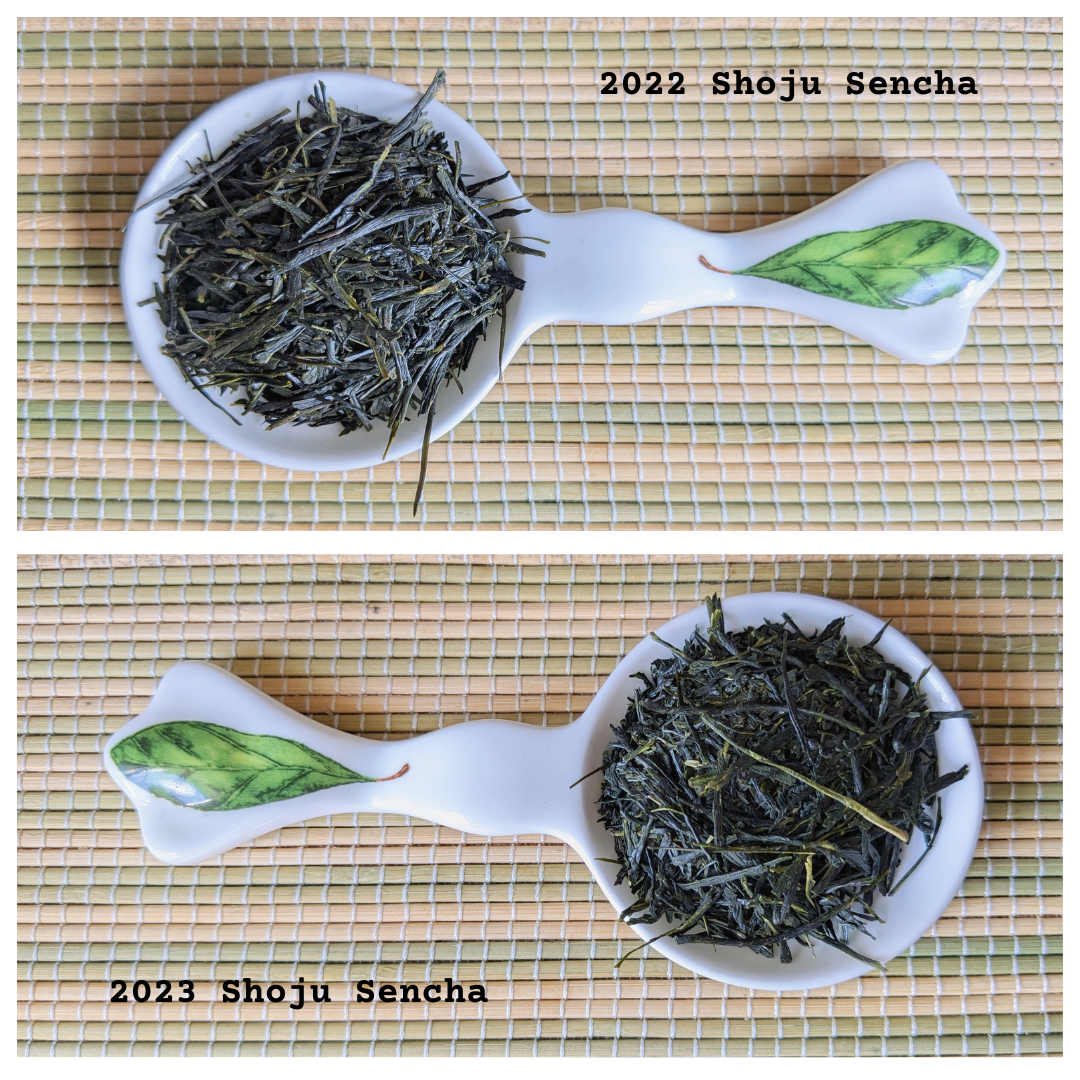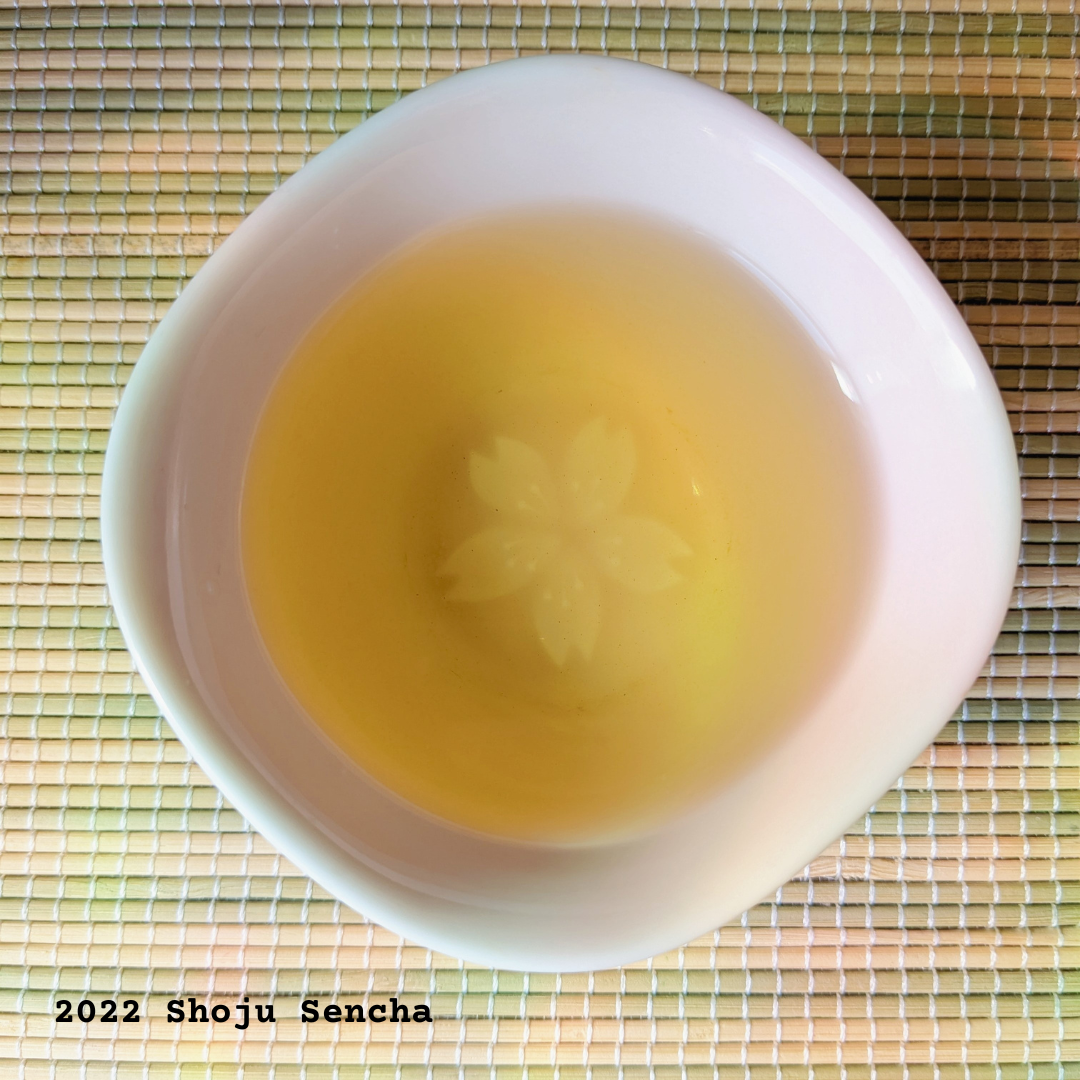I’ve said this before but I’ll say it again, if you want to learn about tea and train your palette to be able to pick out the nuances and subtle differences then comparison tastings are the perfect learning tool for you. Since I started doing them a few years ago, I have learned so much and developed my palette in a way that now enables me to be able to pick out even the subtlest aspects of each tea I drink. Despite this, I still continue to do them because I know that there is still so much for me to learn.
In the past, I have done comparison sessions focusing on differences between cultivars, between levels of roasting, between production techniques and each one has taught me so much about the tea, cultivar or processing technique they were focussed on.
For this comparison session I’ll be sipping on Iba Takahiro Tea Garden’s Tanegashima 2022 Single Cultivar (Shoju) Sencha and Iba Takahiro Tea Garden’s 2023 Tanegashima Single Cultivar (Shoju) Sencha. The only difference between the two of them is the year in which they were harvested. Shoju is a rare cultivar grown by Tanegashima Island tea farmer Iba Takahiro, shaded for about 10 days, and harvested in the third week of March making it one of the earliest teas harvested in Japan.

While I prepared and sipped on both of these teas at the same time in order to accurately compare them, I am going to separate my notes initially. This is so that I can discuss each tea separately in depth, while focusing on their differences to start with and then move on to discussing their similarities.
Let’s start with the 2022 harvest, it’s dry leaves are for the most part khaki green with hints of golden yellow throughout. In finish / texture, they are mostly glossy but there are also some matte parts, most of which were a lighter / bright green in colour, mixed sizes overall and thin, long and needle like. They have a delightful aroma of melted butter, French vanilla, whipped cream, roasted hazelnuts and muted vegetals.
The liquor of the first steep was a cloudy pale yellow with peachy undertones and from the second steep onwards, it was clear and a slightly darker yellow than that first steep.

Given the age of this tea I didn’t really know what to expect from it taste wise, however I had hoped at the very least the notes that were present in the aroma of the dry leaves were also within it’s flavour profile and luckily they were, with this tea starting off sweet and creamy reminding me of freshly whipped double cream with a touch of French vanilla added.
Following those notes were notes of slight sun bleached grass, hay, roasted chestnuts and dried seaweed. As the steeps went on, that sweet creaminess transformed into more of a butteriness and a fresh minerality appeared, steeps towards the end of the session had notes of pine needles and ice cold honey dew melon.

When it comes to texture, this tea has a medium weight and it continues to be fresh, smooth and creamy. Later steeps have heightened minerality so they also have some dryness. It’s very calm, which I expected given the age of it, but it still had some great qualities and lots of unexpected notes which were without a doubt an unexpected yet pleasant surprise. It’s finish is surprisingly long lasting with a lingering sweetness, notes of honey dew melon are prominent in the aftertaste as well as a wet rock minerality & a minute amount of astringency
Moving onto the 2023 harvest, the dry leaves were a mixed palette of dark and light greens, all of which are long, thin and pointed. The light green sections dotted through have more of a matte finish to them as opposed to the dark greens that have a glossier look to them. There was a little more freshness in it’s colour than the 2022 but that was to be expected.
The aromas of the dry leaves had some similar notes but the 2023’s were light and more defined, with notes of vanilla scones, clotted cream, roasted hazelnuts, buttery vegetal, puff pastry and hints of seaweed. The wet leaves however had notes of honey butter potato crisps, subtle citrus and much stronger vegetals. From the first to the last steep, the liquor of this tea was a mid tone yellow, luminous and cloudy, reminiscent of cloudy apple juice.

Immediately noticeable is the fact that this has more of a fresh bite than the 2022 but that was obviously going to be the case given the aging of it, & even though the 2023 sample has aged a little, it still tastes fantastically fresh. There’s a starchiness present in this tea which, when combined with the prominent honey and butter notes, reminded me a lot of my favourite honey butter crisps that I haven’t been able to find anywhere in so long that I’m always on the search for.
Initially it was not as sweet and creamy as the aroma of the dry leaves suggested it would be and was instead more prominently vegetal with notes of orange peel & weirdly a hint of sharp cheddar. However, if allowed to cool in the cup, those sweet and creamy notes of vanilla scones, clotted cream and buttery puff pastry do appear.

It has such a delectably smooth texture in the mouth with the perfect amount of buttery, brothy, vegetal bite and a coating of creaminess. Within its finish however, there is a slight bite on the sides of the tongue and the cheeks to start with, though once that dissipates there is a delightful creaminess and a sugary, long lasting honey sweetness that is amplified with each breath in.
After my session with this tea I was left feeling refreshed, focused, calm and had heightened appetite so this is a tea I would recommend drinking mid afternoon before you have your lunch, or later afternoon before dinner.

Overall, while I enjoyed both of these teas during the comparison tasting and their own solo session, the comparison tasting was a great display of how much the differences in weather and terroir can tremendously effect a tea from year to year. I was interested to see that while there were some similarities between the two, they also has some very unique qualities and the notes that were similar between the two were not the ones I expect to carry through.
This is the first comparison I have done that that included two of the same teas from different harvest years and I feel like I was able to learn so much from, it’s definitely inspired me to want to do more comparisons like this in the future and compare this route with different tea types and see how the results differ across the board.
Should you want to do a comparison like this for yourself, the 2022 harvest is not longer available but over on the Yunomi website the 2023 harvest and the 2024 harvest are both available. So you could still do a tasting incredibly similar to this one. You can find them both here.
If you do end up placing an order with Yunomi remember to use my code INFKKYU to get ¥1000 off an order of ¥5000 or more.
Until next time, Happy Steeping – Kimberley
Leave a comment